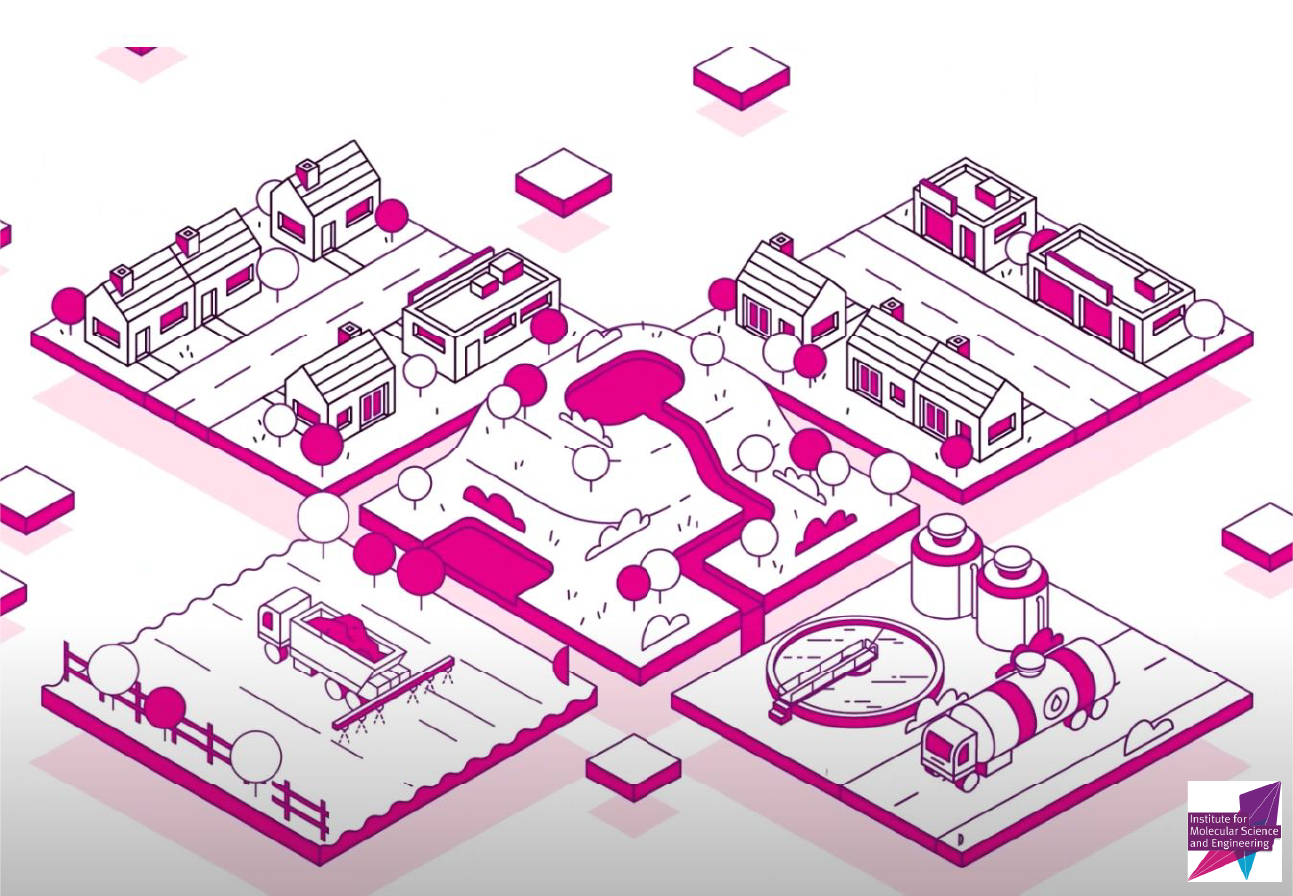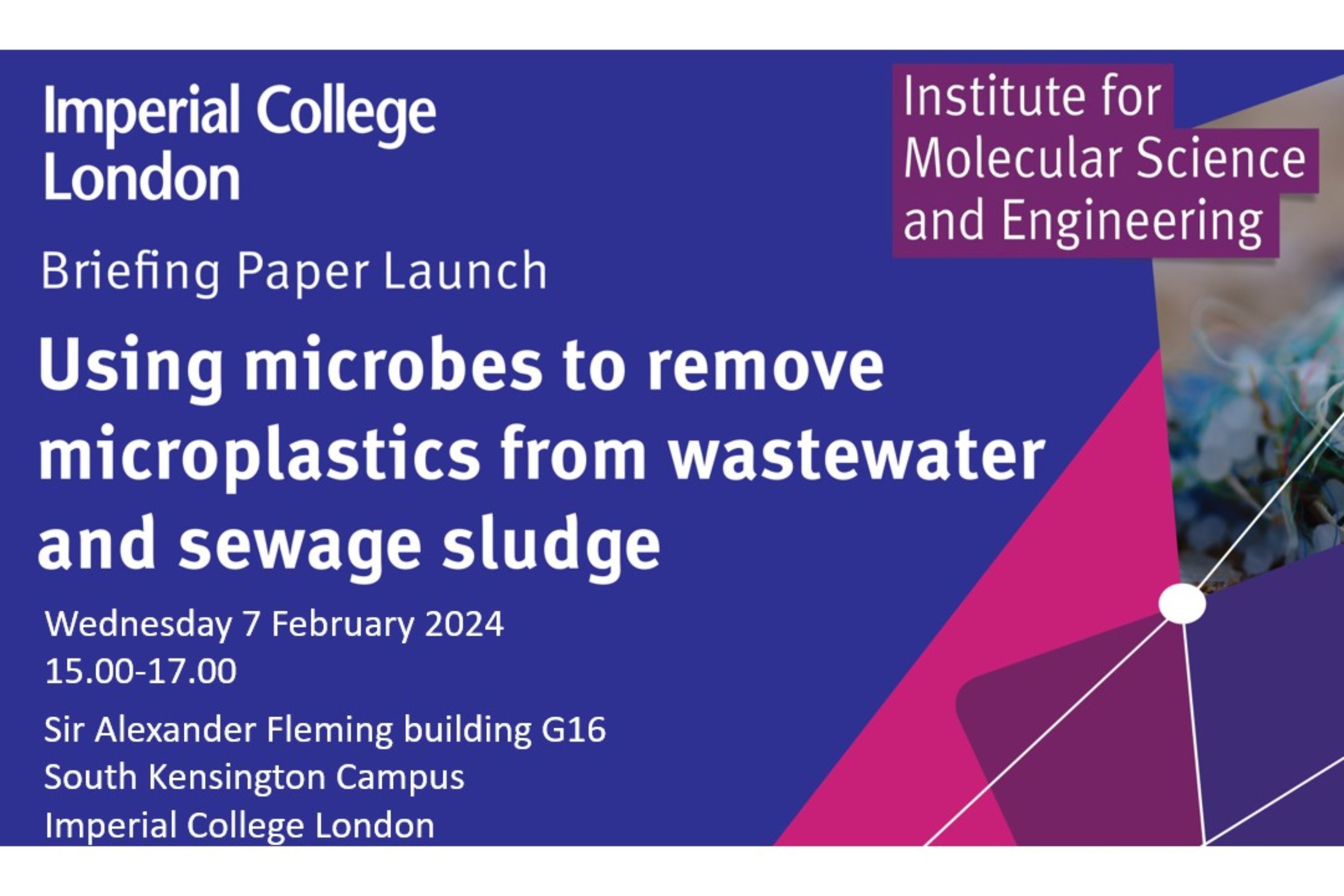Topics: Plastic, pollution, clean water, agriculture
Type: Briefing paper
Publication date: February 2024
Download
Download the full paper [PDF]
Download the executive summary [PDF]
Authors
Joanne Benton, Jose Jiménez, Alice Banks, Sarah Kakadellis, Koon-Yang Lee, Po-Heng Lee, Charles Romain, Stephanie Wright, Isabella von Holstein
Find out more

Using microbes to remove microplastics from wastewater
Infovideo about microplastics briefing paper
Read our briefing paper to find out how we could use microbes and enzymes to remove microplastics from waste water and sewage sludge, to prevent their release into the environment.

Using microbes to remove microplastics from wastewater
Stream of launch event with presentation, panel discussion and audience Q&A
Streamed on 7 February 2024
Professor Mala Rao OBE chairs a panel discussion of academics, water industry experts and civil servants about the potential of using microbes to remove microplastics from waste water and sewage sludge in Britain [96 minutes].
Summary
Issues
- Microplastics are a widespread form of plastic pollution. They are generated from degradation of existing and new plastic waste, the manufacture and laundry of textiles, and the transport sector, among other sources. There is increasing evidence that they are a threat to human health and the environment.
- Microplastics in domestic and industrial wastewater become concentrated in sewage sludge during wastewater treatment processes. In 2020, water companies in England produced more than 800,000 tonnes of sewage sludge from urban wastewater.
- More than 90% of UK sewage sludge is spread on agricultural land as a fertilizer and soil conditioner. This provides a pathway for microplastics to enter the terrestrial environment.
- There is currently no UK legislation defining safe limits for microplastics in sludge and soils, but future regulation is a possibility. Although recent legislative changes will curb some plastic pollution, plastic will continue to enter the environment.
- There is currently no technology available to remove microplastics from wastewater treatment processes or the resulting sludge.
Solutions
- Safe limits for microplastics in treated sewage sludge, soils and water bodies should be identified. This will require a survey of the extent of microplastic pollution throughout the UK, including concentration, identity and characteristics of microplastics in each environmental reservoir, and understanding how microplastics affect different living organisms.
- Microbes or fungi that break down plastic could be added to existing wastewater treatment processes to remove microplastics and prevent their release into the environment (Figure 1). Alternatively, only the active enzymes (rather than the live microorganisms) could
be added to the process. - Currently, only polyester microplastics (11% of the total microplastic burden) could be treated in this way. Different biological agents would have to be discovered or developed to tackle other common microplastic polymers such as polypropylene or polyethylene.
- It will still be necessary to tackle microplastic pollution at source, for example by fitting microfibre filters into washing machines to capture microfibres released by washing.
Download
Download the full paper [PDF]
Download the executive summary [PDF]
Image by Pascvii from Pixabay
